Arctic Glacier’s Galloping Melt Baffles Scientists
New satellite data analysis has produced evidence that rapid melting in the last three years has caused dramatic shrinkage of an Arctic ice cap.
By Alex Kirby, Climate News Network
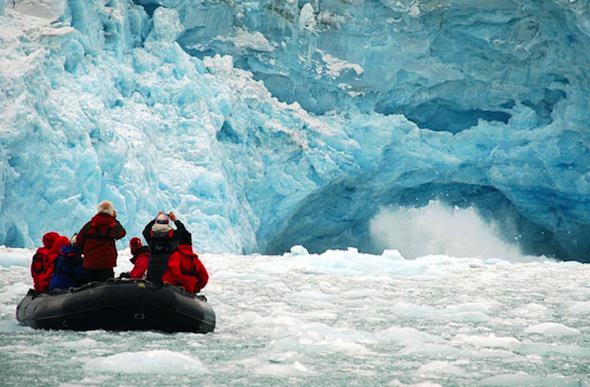
Ice caps and glaciers such as this one in Svalbard account for about a third of recent global sea level rise. Photo by Woodwalker via Wikimedia Commons
This Creative Commons-licensed piece first appeared at Climate News Network.
LONDON — An ice cap in the high Arctic has lost what British scientists say is a significant amount of ice in an unusually short time.
It has thinned by more than 50 metres since 2012 — about one sixth of its original thickness — and the ice flow is now 25 times faster, accelerating to speeds of several kilometres per year.
Over the last two decades, thinning of the Austfonna ice cap in the Svalbard archipelago — roughly half way between Norway and the North Pole — has spread more than 50km inland, to within 10km of the summit.
A team led by the scientists from the UK Centre for Polar Observation and Modelling (CPOM) at the University of Leeds combined observations from eight satellite missions, including Sentinel-1A and CryoSat, with results from regional climate models, to understand what was happening.
Sea level rise
The study’s lead author, geophysicist Dr Mal McMillan, a member of the CPOM team, said: “These results provide a clear example of just how quickly ice caps can evolve, and highlight the challenges associated with making projections of their future contribution to sea level rise.”
The study, published in Geophysical Research Letters, is the first to make use of measurements from the European Space Agency’s latest Earth observation satellite, Sentinel-1A.
Dr McMillan said: “New satellites, such as the Sentinel-1A and CryoSat missions, are essential for enabling us to systematically monitor ice caps and ice sheets, and to better understand these remote polar environments.”
“Whether or not the warmer ocean water
and ice cap behaviour are directly linked
remains an unanswered question”
Melting ice caps and glaciers account for about a third of recent global sea level rise. Although scientists predict that they will continue to lose ice in the future, determining the exact amount is difficult, because of a lack of observations and the complex nature of how they interact with the climate around them.
The 20 years of satellite data that the scientists have amassed show some fairly small changes at the start of the study period, but these have since increased.
“Glacier surges, similar to what we have observed, are a well-known phenomenon”, said Professor Andrew Shepherd, the director of CPOM. “What we see here is unusual because it has developed over such a long period of time, and appears to have started when ice began to thin and accelerate at the coast.”
There is evidence that the surrounding ocean temperature has increased in recent years, which may have been the original trigger for the ice cap thinning.
Flow models
Prof Shepherd said: “Whether or not the warmer ocean water and ice cap behaviour are directly linked remains an unanswered question. Feeding the results into existing ice flow models may help us to shed light on the cause, and also improve predictions of global ice loss and sea level rise in the future.”
The team says long-term observations by satellites are the key to monitoring such climate-related phenomena.
Dr McMillan told Climate News Network he did not think what was happening in Austfonna suggested any sort of tipping point in the Arctic, which scientists say is warming more than twice as fast as anywhere else on Earth.
He said: “What I take from this work is that we don’t understand well enough what’s caused this sort of behaviour — natural variability, ocean temperatures or atmospheric temperatures. It reinforces the complexities and the challenges of the future.”
Your support matters…Independent journalism is under threat and overshadowed by heavily funded mainstream media.
You can help level the playing field. Become a member.
Your tax-deductible contribution keeps us digging beneath the headlines to give you thought-provoking, investigative reporting and analysis that unearths what's really happening- without compromise.
Give today to support our courageous, independent journalists.
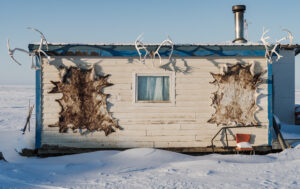
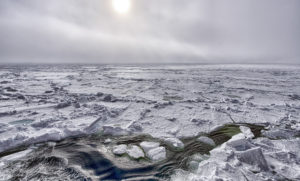
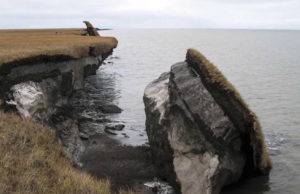
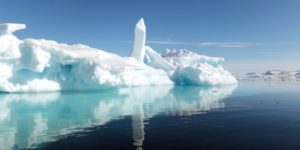
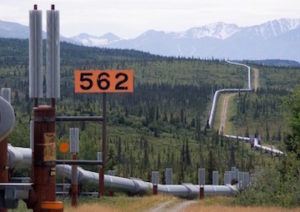

You need to be a supporter to comment.
There are currently no responses to this article.
Be the first to respond.